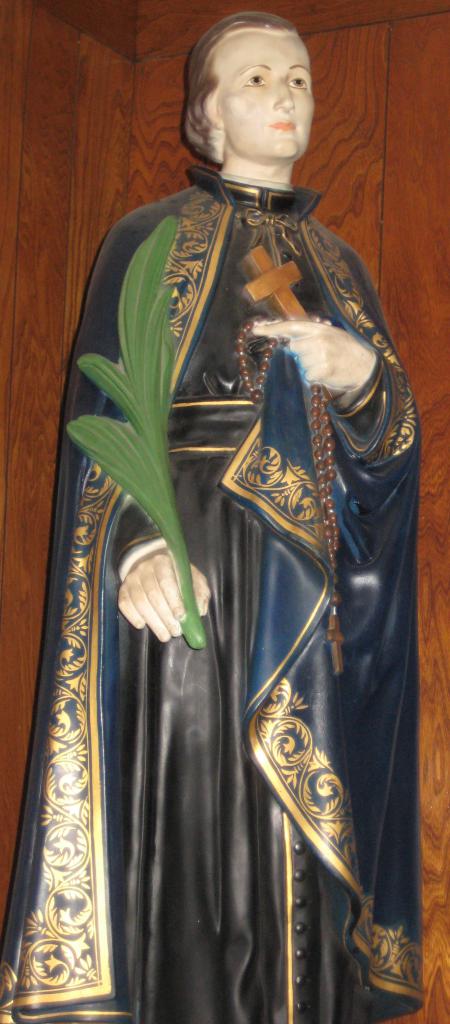Oceania is a region made up of thousands of islands throughout the Central and South Pacific Ocean, including Australia and New Zealand.
St Peter Chanel is the Protomartyr (first martyr) of Oceania. The story of his martyrdom converted the whole of the island of Futuna, christening it as ‘Gateway to the Gospel’.
St Peter was born on 12th July 1803 in France, in the Diocese of Belley-Ars. From the age of seven to 11 he was a shepherd boy. He was attracted to missionary life in his school days when he read letters written by French missionaries living in America, strengthening his thirst to make Christ known to the ends of the earth.
Noticed by the local parish priest for being an obedient and smart child, his parents were encouraged to send him to the school that the priest had just started. On finishing, he went on to join the minor seminary at Meximieux, in 1819 and progressed to the major seminary in Brou in 1824. On 15th July 1827 at the age of 24, he was ordained a priest.
He asked the bishop to allow him to become a missionary but his request was denied. He was posted as an assistant priest for a year, then as a parish priest, where he revitalised the parish assigned to him. In the midst of it all, his heart only wished for his true calling, that of being a missionary.
During this time, St Peter came in contact with a group of diocesan priests who hoped to start a new missionary order dedicated to Mary. In 1831, with his bishop’s agreement, he joined this group. Its most prominent members were Jean-Claude Colin, founder of the Marists (Society of Mary). After numerous deliberations, the Papal approval of the priests’ branch of the Society of Mary was finally given in April 1836, called the ‘Marists’.
This was the start of St Peter’s lifelong dream to carry out missionary work. He was sent to the islands of the Pacific with other Marists, where he faced many obstacles. He had no formal training and did not know the local language. Evangelisation seemed hopeless with very few wanting to be baptised, and Peter facing opposition from the local chief who was wary of his intentions. Peter took solace from the Eucharist, in the face of disappointment of having minimal baptismal numbers compared to his previous parish ministry where he had experienced greater success in evangelisation.
Over three and a half years, St Peter along with other priests laboured zealously to learn the local customs and language. He now saw his work bear fruit as a few more natives were baptised and more were being instructed. Then, the son of the island chief, drew conviction from St Peter’s preaching and asked to be baptised. On hearing this, the furious chief ordered the death of St Peter, perceiving him a threat to his power and status. St Peter was clubbed to death on 28th April 1841 by the island chief’s leading warrior, Musumusu and his team, cutting up his body with hatchets.
Two years after witnessing the violent death, the whole island of Futuna converted to Catholicism, and today it remains a Catholic land. The very warrior who killed St Peter, Musumusu, became a convert himself. In penance for the heinous crime committed, he requested that his body be buried outside the church that held St Peter’s relics, so that the people who come to honour St Peter’s grave would have to walk over his. Such is the power of the blood of a martyr, which bore fruit even in death.
St Peter’s feast day is celebrated on 28th April. He is the patron saint of Oceania, a true inspiration for the many whose faith is tested in trying times, knowing how Christ only brings beauty and life even from death.
Notre Dame De France Catholic Church, located in Leicester Place, is where the Marist Order is based in our diocese.




